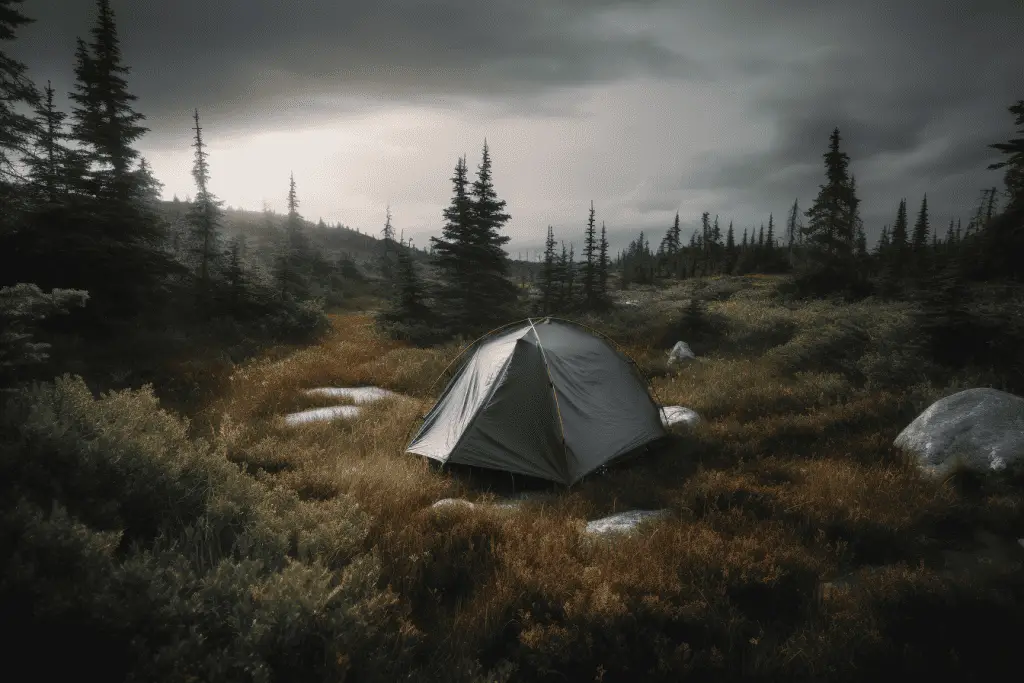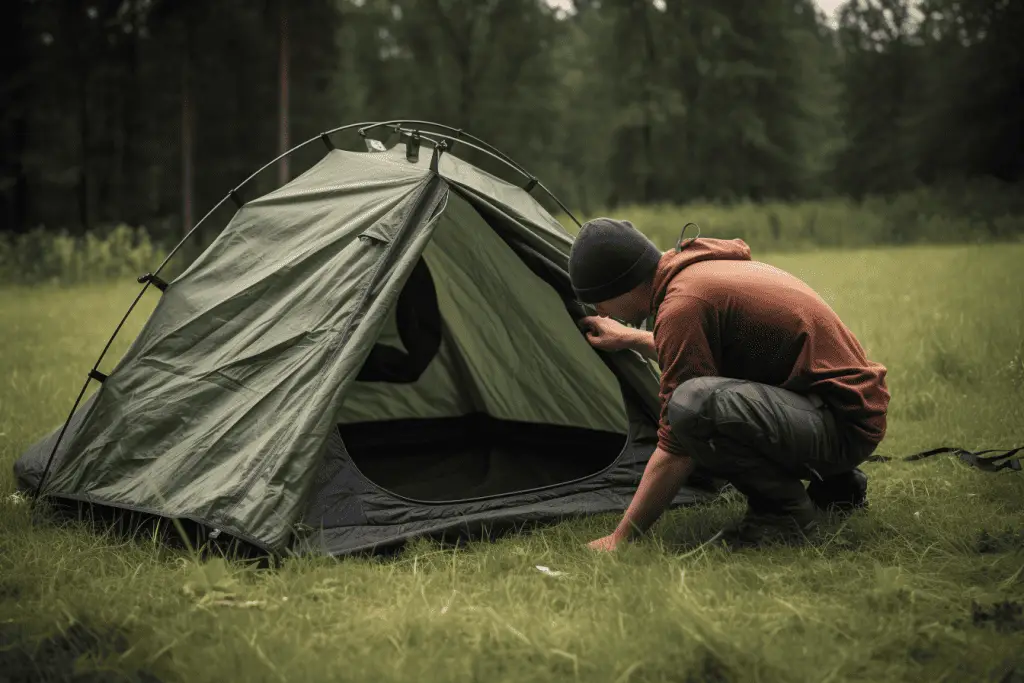There are so many tents on the market these days. This is great as it gives us many different choices, but it can also make it difficult to figure out what type of tent to get.
Dome tents are popular, but what is a dome tent?
A dome tent is a type of camping tent that features a unique design with flexible poles crossing each other on the top, creating a dome-shaped structure. The dome structure makes it incredibly stable and reliable, offering a high resistance to wind and extreme weather conditions.

Pros and Cons of Dome Tents
Just like all types of tents, there are pros and cons to dome tents. Here are some of the advantages and disadvantages that you should know about.
Advantages of Dome Tents
- Stability: Thanks to their rounded design, dome tents are remarkably stable and can withstand wind and weather pretty well.
- Easy Setup: Dome tents are usually straightforward to pitch, making them great for beginners or anyone who doesn’t want to spend too much time on setup.
- Roomy Interior: The dome shape creates a roomy interior with decent head height in the center, perfect for when you want to hang out or wait out a storm.
- Lightweight: Many dome tents are designed with lightweight camping in mind, so they’re often lighter than other styles of similar capacity.
Disadvantages of Dome Tents
- Limited Headroom: While they are roomy in the middle, the curved walls can reduce usable space near the edges, which can be an issue for taller campers or larger groups.
- Not Ideal for Extreme Conditions: Although they’re good in moderate winds, they’re not usually the best for super heavy snow or extreme conditions – a geodesic tent might be better there.
- Less Privacy: In larger multi-person dome tents, the single room design may offer less privacy compared to tunnel tents or cabin-style tents that have separate rooms.
Overall, dome tents are a fantastic choice for a variety of camping situations. Their pros typically outweigh their cons, but it always depends on your specific camping needs and conditions!
Choosing the Perfect Dome Tent: Key Factors to Consider
First off, size matters. How many people are you planning to accommodate? Remember, a “two-person” tent might fit two people snugly, but consider going a size up if you need room for gear, or just like a little extra space.
Weight is another biggie. If you’re backpacking, every ounce counts. Look for lightweight models, often called ultralight or backpacking tents. However, if you’re car camping, feel free to choose comfort over weight—you won’t be carrying it far from your vehicle.
Don’t forget about setup ease. Nothing dampens the camping spirit like a complicated tent setup as the sun sets. Dome tents are generally straightforward to pitch, but variations exist. Pop-up or inflatable dome tents can be up in minutes.

Lastly, consider the features. Things like the number and configuration of doors, the presence of a vestibule for gear storage, and the quality of the tent’s ventilation can all impact your camping experience. A good rule of thumb is to decide on your non-negotiables and work from there.
Choosing the right dome tent is all about balancing your needs, from size and weather resistance to weight and additional features. With a bit of research and thought, you’ll find the perfect one for your camping adventures.
Alternatives to Dome Tents
While dome tents are a popular and versatile choice for many campers, they’re just the tip of the camping shelter iceberg. Depending on your camping style, you might find other types of tents more suitable for your outdoor adventures. From the spacious tunnel tents to the minimalist bivy sacks, the world of camping shelters is diverse and packed with options. Whether you’re planning a family vacation, a rugged backpacking trip, or an ultralight hiking expedition, there’s an alternative to dome tents that might just suit you perfectly. Let’s dive into some of the standout options and explore what they bring to the table.
Tunnel Tents
One popular alternative is the tunnel tent. It’s named for its distinctive shape, which is created by a series of hooped poles running along the length of the tent. Tunnel tents are loved for their high volume-to-weight ratio, making them a top pick for family camping or base camps.
A-Frame Tents
Then there’s the A-Frame or ridge tent, one of the most traditional designs out there. It’s shaped like a triangular prism or an ‘A’, hence the name. These tents are relatively easy to set up and can be quite robust, although they don’t always offer as much headroom.
Cabin Tents
Cabin Tents are your ‘luxury apartment’ of the camping world. They’re often larger, with near-vertical walls for maximum internal space and headroom, and some even have multiple rooms. They’re heavier and typically not suited for backpacking, but they’re a big hit for car camping or longer stays at a single campsite.
Backpacking Tents
The backpacking tent is another one to consider. These tents prioritize lightweight and compact design for easy carrying on long hikes. They come in various shapes, including dome, but are generally smaller and simpler.
Bivy Sacks and Hammock Tents
Last but not least, we have bivy sacks and hammock tents for ultra-light campers. A bivy sack is a small, lightweight shelter just big enough for one person, while a hammock tent lets you sleep suspended above the ground. They’re not for everyone, but they’re unbeatable for weight and pack size.
Remember, there’s no one-size-fits-all when it comes to camping shelters. Whether it’s a dome, tunnel, or cabin tent, or even a bivy sack or hammock, the best choice depends on your needs, preferences, and the type of camping you’ll be doing.
Making the Right Choice for Your Outdoor Adventures
Choosing the right tent is a crucial part of ensuring an enjoyable camping experience. Whether you opt for a dome tent or one of its alternatives, the most important thing is that your shelter fits your specific needs and camping style. Be it the spaciousness of a tunnel or cabin tent, the traditional simplicity of an A-frame tent, the lightweight convenience of a backpacking tent, or the ultra-minimalism of a bivy sack or hammock tent, each option has its unique advantages.
So take the time to consider the conditions you’ll be camping in, the number of people you’ll be camping with, the gear you’ll need to store, and the weight you’re willing to carry. No single tent type is the best—it’s about what’s best for you and your adventure. Happy camping, and here’s to finding your perfect home away from home under the stars!
